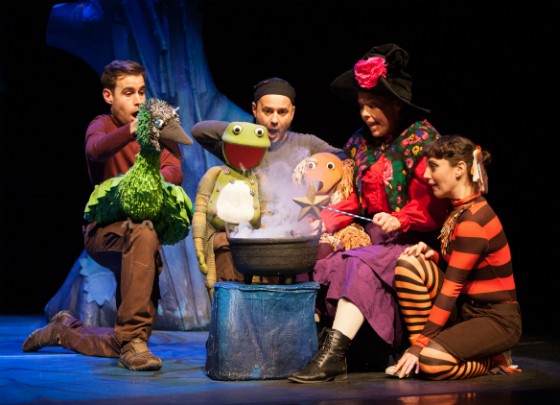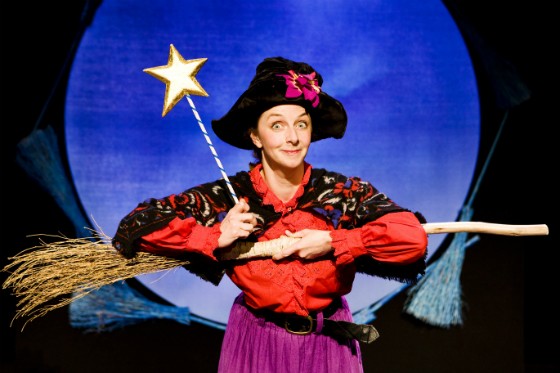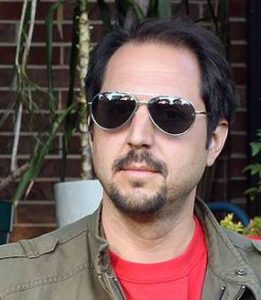
To live with autism is a challenge. People diagnosed with autism (or one of the many afflictions that fall under the umbrella diagnosis of autism spectrum disorder [ASD]) can face a great range of obstacles that make it difficult for them to enjoy things other people take for granted. Relatives of autistics also face challenges while trying to help their loved ones enjoy all that life has to offer. A recent New York Times article showcased an impassioned plea from an actor performing in a theatrical production of The King and I. Evidently, a boy with autism suffered an extreme reaction to a violent scene in the musical, but what stood out to the actor was the intolerance and condemnation the rest of the audience showed that boy's mother for taking him to the theater. This weekend, Segerstrom Center for the Arts joined the initiative, begun on Broadway by Theatre Development Fund, to provide Sensory Friendly (SF) programming for people with autism.
]
On October 31st, Tall Stories Theatre Company performed Room on the Broom at Segerstrom's Samueli Theater. This was the first of three shows in the 2015 – 2016 Family Series that incorporate SF theatrical modifications to make the entertainment more accessible to people with autism and other developmental disorders. Among those modifications are precautions to reduce sound levels, especially loud and frightening noises; special adjustments to the stage and house lighting to facilitate more relaxed and safe environments; and more seating space to allow for movement and / or room for exiting during a performance, if necessary. Additionally, prior to the performances, links to online supplemental performance guides can be accessed by ticketholders. These guides provide families with background on the performers and the story as well as information about the lighting and sound cues, song listings, length of the performance, and recommended ages.
Segerstrom Center's VP of Education, Talena Mara spoke with the Weekly about the initiative. She said that the inspiration for bringing SF programming to Segerstrom started with an awareness that there was a demand for it within the community.
“Over the course of time, we have noticed that there are many families that have these kinds of needs, and we've gotten letters from some families who were hoping for this kind of programming,” she says.
Segerstrom's Director of Education, Alex Jones, went on to tell the Weekly how those letters started the ball rolling. “From there, we formed an advisory board of some local organizations and folks who are involved in the autism community just to see, scale wise, what type of shows we should be doing,” he says.
[

Once they entered the planning stages, the implementation took a little while to get going. Mara explained the process: “We began talking about it a couple years ago…[then] we began partnering with other organizations to make sure that we were doing it in sort of a best practices way.” Mara emphasized the need to provide art and culture for autistic people and their families, like the ones mentioned in the New York Times article.
“We just feel like this is something [necessary for] people who normally can't come to the theater easily,” she says. “It makes a more engaging environment for them and one in which we create a safe space for their family to come and have a wonderful experience together, which is something that doesn't happen very often for many of these families.”
Mara says that this type of programming is something that arts and cultural centers are increasingly being called upon to provide.
“We are deeply aware of the sensory problems that kids have on a fairly significant scale in the education world,” she says. “And so we knew that it wasn't just a tiny little group of people that were calling for this; it actually is a much larger group than most people would be aware of.”
After this season's adaptation of several shows in Segerstrom's Family Series, Mara looks forward to expanding the SF program across the spectrum of Segerstrom programming.
“Our family series was a perfect place to start [because they] are for smaller audiences so that we could sort of find out what the process is and how it is impactful and effective in a smaller environment,” she says. “Probably next year we will add a much larger show — maybe one in Segerstrom Hall — to the list, and who knows where it goes from there?”
Beyond the autistic community, it seems like the general community is on board with the SF agenda. Mara revealed, “I had the privilege of talking with our board about it recently, [and they] are thrilled about it…We also have many many people connected to the center who are thrilled that the center is looking towards its community in this sort of way and really trying to fill the needs of the public that surrounds us.” She added that she is glad that the Segerstrom Center for the Arts has the resources to take such risks for the sake of helping the community and for the sake of promoting the arts within it.


